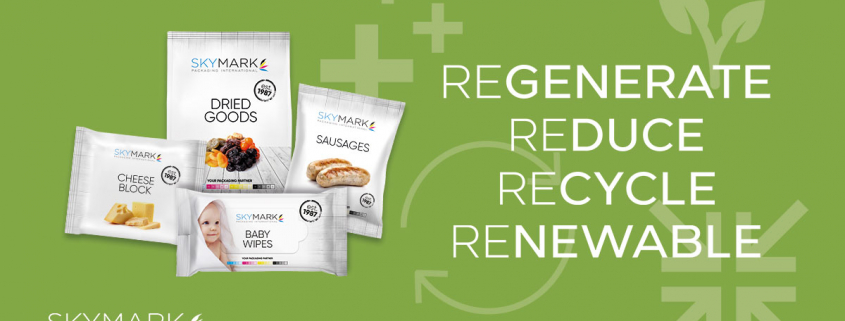Almost everything we buy is packaged in some way.
Big consumer-facing organisations have made bold commitments to achieve zero or drastically reduced greenhouse gas emissions to enhance their overall corporate sustainability performance, including us. Simultaneously, their attention on packaging has been on boosting recyclability and recycled content.
Sustainable packaging efforts are frequently motivated by a goal to not comprise on the primary function which is to protect the product, but the list of desirable packaging solutions is long. Consumers want brand owners and retailers to quantify the environmental or sustainability impact of packaging based on many factors, which will ultimate make consumers feel pleased with their purchase.
- Reduce weight or reduced the use of materials
- Reduced carbon footprint
- Reduced use of other resources
- Reuse
- Use of recycled material
- Use of recyclable material
- Use of compostable or biodegradable material.
Even though brand owners, retailers, and regulators recognise the importance of sustainability, there is no universal method or solution on how to implement it across these interconnected factors. There is no one solution that fits all.
However the vast array of design options to improve the sustainability story could be handled in two stages:
The first step is to look for low-hanging fruit. Customers and packaging converters alike will benefit from the design changes, which will have a minimum impact on operational expenses and capital expenditures. These steps include removing needless packaging, increasing the use of recycled content in packaging materials, when possible (for example, in less sensitive applications such as non-food goods), and assisting in the successful communication of sustainability narratives (for instance, by showing consumers how to recycle packaging).
The second step is a little more difficult, but it’s still feasible. Package-design innovations which take into consideration the complete circular economy and the direct environmental effect of creating packaging materials, can generate more broad changes than those in step one. Packaging design that makes use of current material developments and uses more mono-materials might be part of this endeavour. It might also entail developing package designs in novel shapes and forms, as well as new substrates, to make recycling easier. It will be vital to guarantee that these design decisions do not have unintended negative implications, such as an increase in food waste, which might have a bigger environmental impact.
We think that taking an end-to-end view of the value chain and applying a science-based approach to sustainable claims. Some activities, such as adopting nonrecyclable lightweight packaging with a smaller carbon footprint, may result in inadvertent conflicts. As a result, it’s critical to give more transparency and provide a more rigorous and fact-based approach to packaging’s sustainability performance so that consumers, firms across the value chain, and regulators can make more educated packaging decisions.
For each proactive member in the packaging value chain, we propose the following three lessons:
- Consumers and customers should be educated. Get your product’s sustainability story right by presenting a fact-based assessment of where your packaging product sits in comparison to the next-best options across the major sustainability elements—and be sure to emphasise the trade-offs.
- Examine the trade-offs between sustainability goals in detail. Consider the whole value chain when calculating your carbon footprint, considering both direct and indirect carbon impacts as well as all the benefits and drawbacks of each material choice. Also keep in mind that innovative business models, such as reusable ideas, may help to reduce carbon emissions even more.
- Expect external unpredictability. Recognize that how packaging sustainability is viewed is unclear and that the external environment may change (for example, new regulation focused on one dimension of sustainability could be introduced, potentially at the expense of others). To do so, you should analyse all aspects of sustainability, including the influence of other major packaging trends that are creating change and uncertainty, and develop a packaging product contingency plan.







